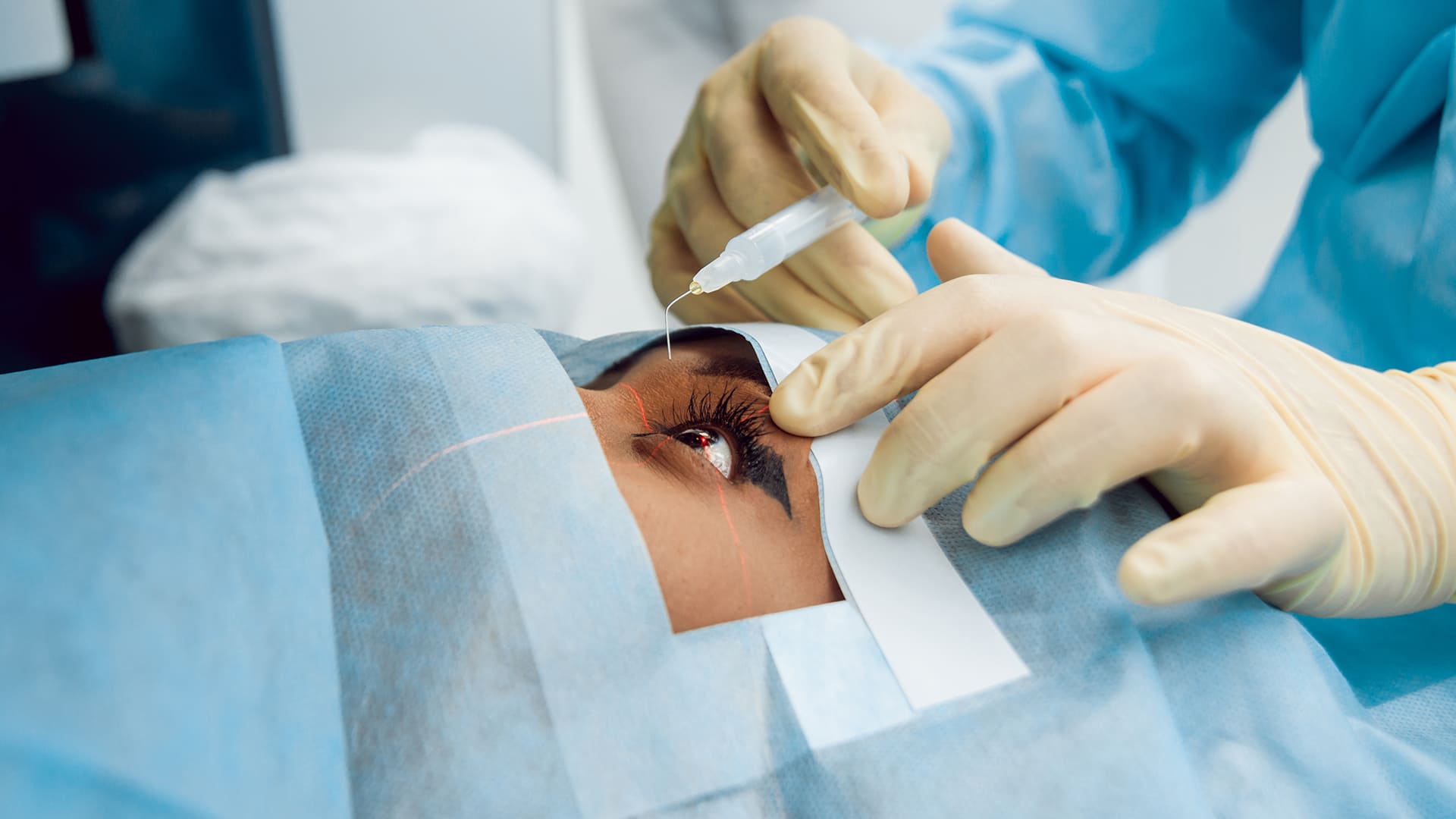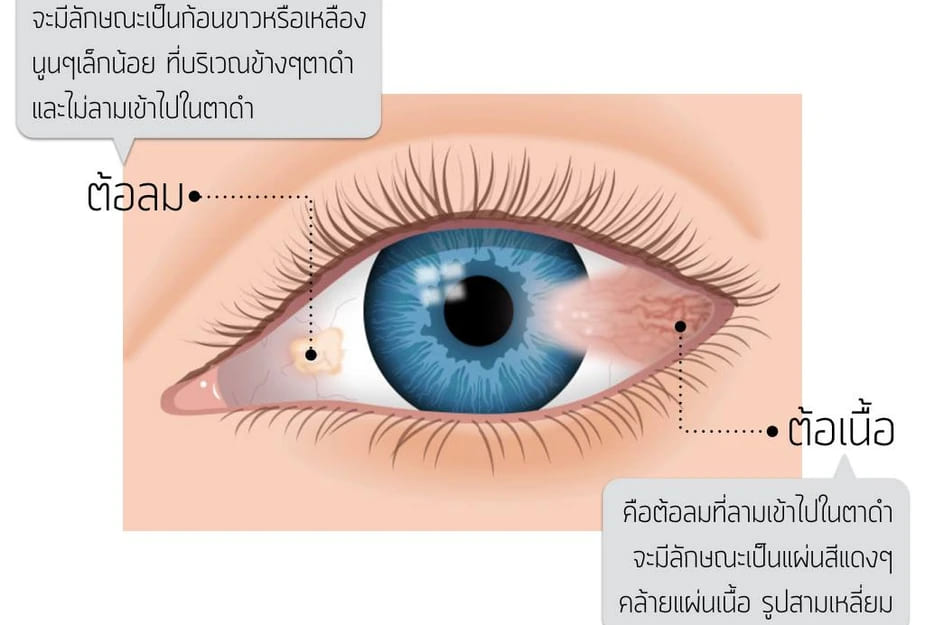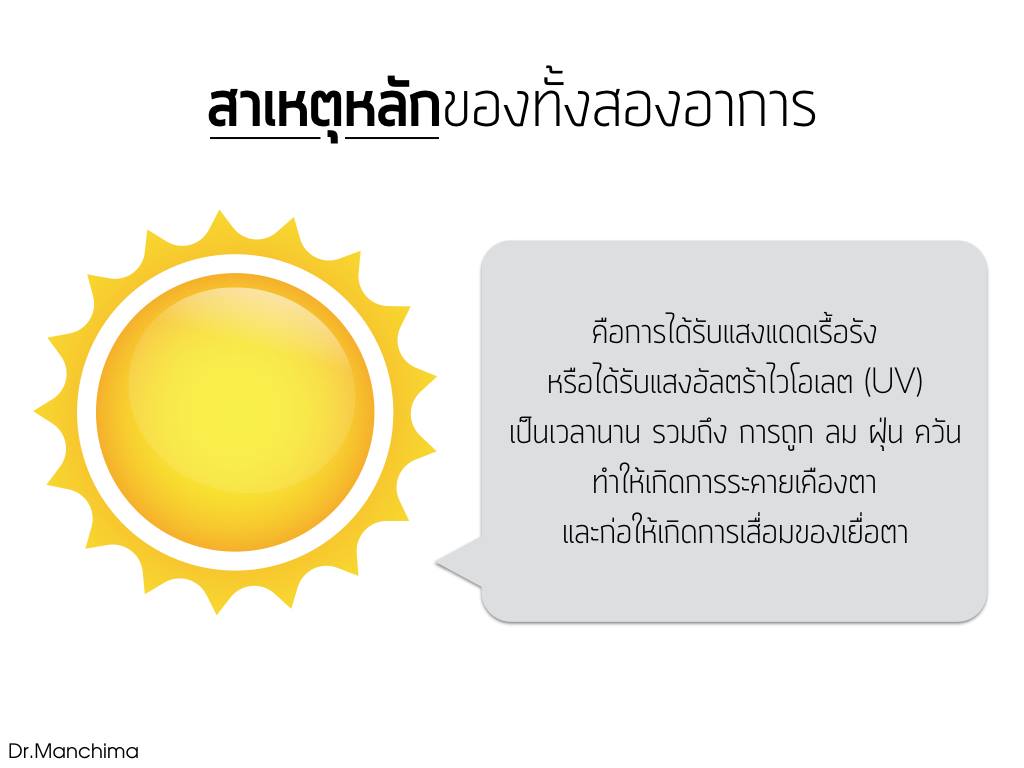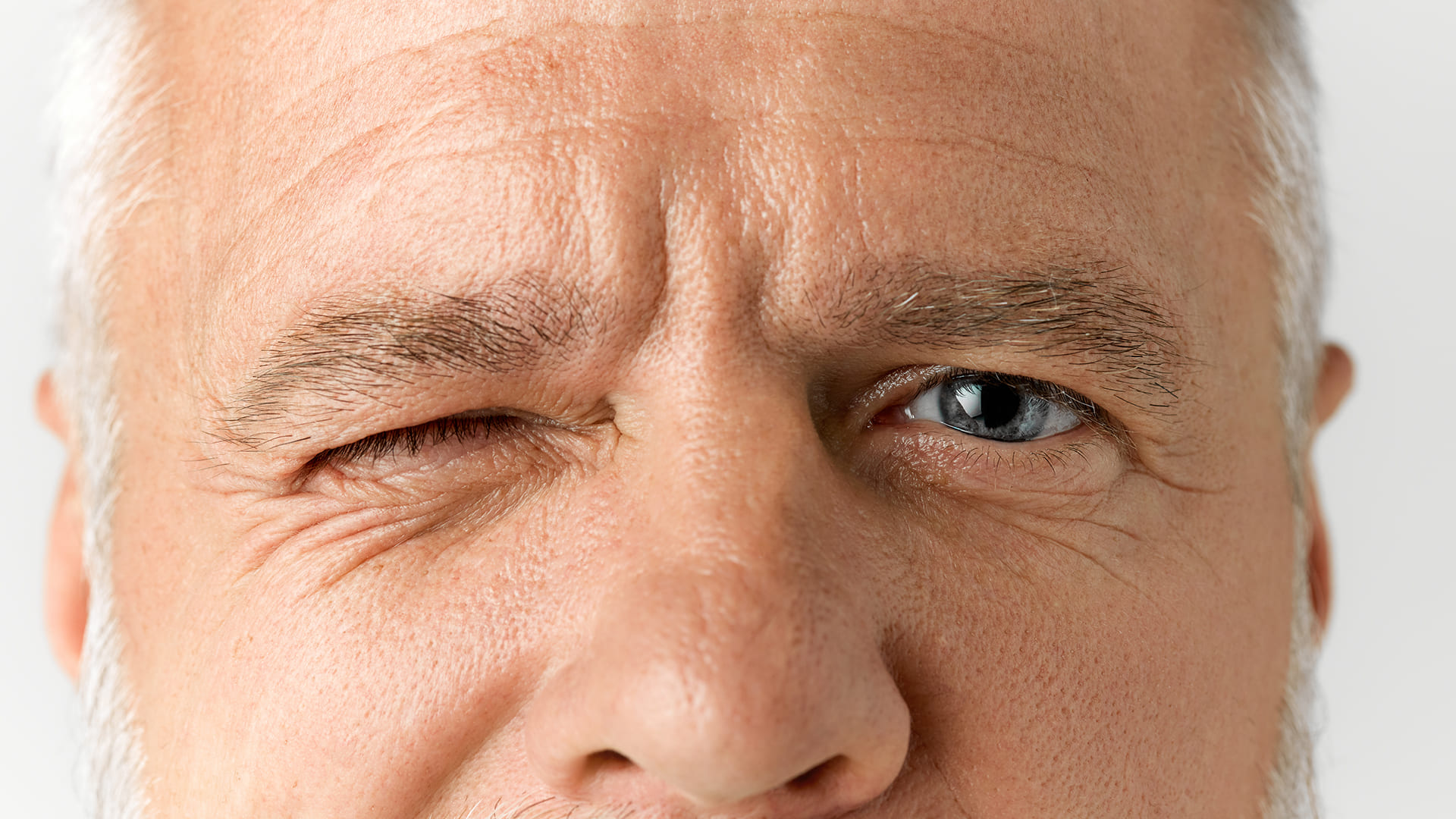
- Everyday 9.30 AM – 6.30 PM
Both pterygium and pinguecula are treatable. It’s important to regularly check your eyes and visit a doctor for routine eye exams. The earlier they are detected, the faster they can be treated.

Pinguecula: This is a small, white or yellowish raised bump on the side of the eye near the cornea, and it doesn’t extend into the eye.
Pterygium: This occurs when a pinguecula grows into the cornea, forming a triangular-shaped, red area resembling tissue.
The main causes of both conditions are prolonged exposure to sunlight or ultraviolet (UV) light for extended periods, as well as irritation from wind, dust, and smoke. These factors can cause damage to the eye’s surface and lead to the deterioration of the eye’s membrane.

Using eye drops, anti-inflammatory medication, or artificial tears can help relieve irritation or redness in the eyes. However, these treatments do not remove the growths themselves.
Surgery is recommended when the growths have become inflamed or are large enough to block vision. If the growth is small, surgery may not be necessary, as there is a risk of the growth returning and potentially growing larger or faster.
Wearing sunglasses that block UV rays is important for protecting the eyes from sunlight and ultraviolet (UV) radiation. Additionally, protecting the eyes from wind, dust, and smoke can help prevent further irritation.
Article by:
Dr. Nan (Assoc. Prof. Dr. Manchima Makornwattana)
Share Article:
Related Article:



About us
We provide specialized eye care services by ophthalmologists with expertise and experience, using state-of-the-art medical equipment and standardized surgical rooms
Links
Contact us